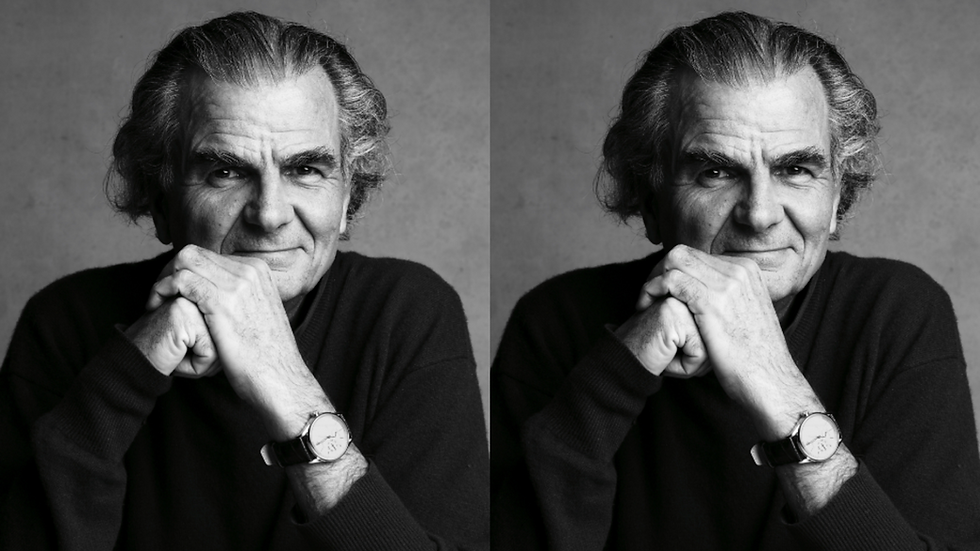Marc Jacobs: The Disruptor at Louis Vuitton, A Legacy of Luxe Rebellion
- thelazychaiii

- Nov 14, 2024
- 3 min read

When we talk about fashion’s biggest risk-takers, the name Marc Jacobs is inevitable, especially for his transformative era at Louis Vuitton. For 16 years, he held the creative reins, taking LV from a legacy label to an avant-garde powerhouse. From groundbreaking collaborations to dreamy campaigns, Marc’s time at Louis Vuitton is one of those rare golden ages that changed the industry’s DNA.
A New Beginning: Rewriting Tradition
Marc Jacobs joined Louis Vuitton as their first creative director in 1997, and the industry didn’t know what hit it. Back then, Louis Vuitton was known for its iconic monogram but didn’t venture far beyond leather goods. Marc saw this as a canvas, a blank slate to inject new life into. His vision was simple: make LV bold, experimental, and iconic. And he did just that, blending high fashion with street culture, art, and fantasy.
Collaborations That Broke the Internet
Who could forget the Takashi Murakami multicolor monogram? Marc’s collaboration with Murakami in 2003 brought a pop-art twist to the brand, a complete departure from LV’s traditional aesthetic. It was playful, vibrant, and, above all, a commercial hit. This partnership brought LV bags into the arms of every It-girl, making them a symbol of cool rather than just classic luxury.
Then came Stephen Sprouse’s graffiti monogram. Gritty, rebellious, and totally unexpected. Marc invited us to rethink what "luxury" meant, giving us bags that looked like they’d been spray-painted by a renegade artist. It was a risky move, but it defined the early 2000s and shifted fashion’s trajectory towards street art and high-fashion collabs.
When Fashion Met Art… And Stayed Together
What made Marc’s work so addictive was his ability to turn each collection into an art exhibit. Remember the Yayoi Kusama collection in 2012? Those iconic dots covering bags, dresses, and even window displays were a love letter to the world of contemporary art. Marc wasn’t just designing clothes; he was curating an art gallery, with Louis Vuitton as his canvas.
He also brought some theatricality to his runway shows, making them experiences to remember. From full carousels and train sets to clock towers that seemed to transport you to another world, each show felt like a scene in a fashion fairy tale.
The Rise of It-Bags and Celebrity Ad Campaigns
Marc Jacobs made us obsess over bags. His designs were unique, with a touch of the unexpected, and he introduced us to the idea of the “It-Bag.” From the LV Speedy to the Neverfull, Marc redefined what it meant to own a designer bag. It wasn’t just a luxury; it was a piece of art.
And let’s talk campaigns! Marc knew how to use the allure of Hollywood, transforming Vuitton campaigns into works of art that you wanted to frame. His campaigns weren’t just selling bags or clothes; they sold a lifestyle, a fantasy.
Farewell to Louis Vuitton, but Not the End
In 2013, Marc said goodbye to Louis Vuitton to focus on his own label. His departure marked the end of an era, but the influence of his work still lives on. Vuitton was never the same after Marc…he’d given it a new soul, a rebellious spirit that even Nicolas Ghesquière has kept alive in his own way.
Marc Jacobs’ legacy at Louis Vuitton is about more than collections; it’s about vision and courage. He taught us that luxury could be edgy, playful, and, above all, daring. Louis Vuitton owes its modern-day status to this fearless disruptor, and his era remains a constant source of inspiration in fashion.
That’s Marc Jacobs for you: a rebel with a vision, who transformed Louis Vuitton into a playground for art, culture, and expression. Here’s to the man who dared to make luxury loud.




Comments